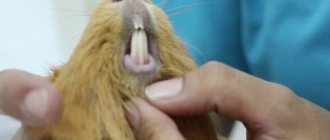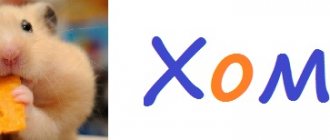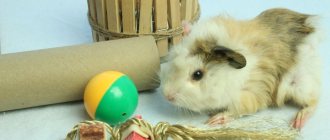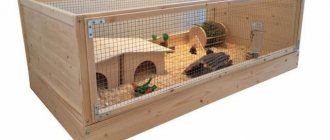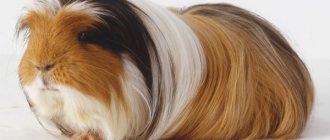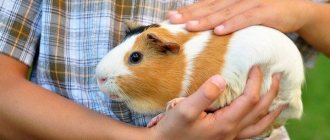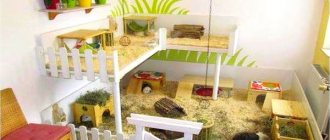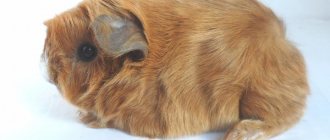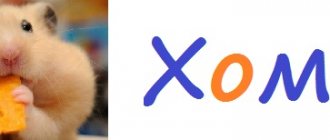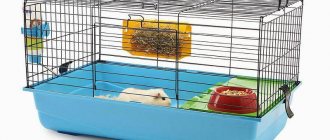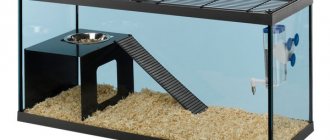- home
- Guinea pig
- Guinea pig health
02/11/2019 The teeth of guinea pigs are the main tool in their life, so they are naturally strong, because the animals are constantly gnawing on something. But due to an accidental injury or poor diet, the dental tissue is destroyed, causing pain to the pet while eating. The pig loses weight, which leads to death from exhaustion. This can be prevented if you notice the signs of the disease in time.
How many teeth does a guinea pig have?
All pigs, regardless of species and breeds, have the same jaw structure. You need to know that the number of teeth of a guinea pig is 20. They have the peculiarity of constantly growing. Their length is corrected by the ability to constantly gnaw or chew something. Constant growth and their correction inherent in nature allows the animal to keep its teeth, otherwise it would not have them after a year of life. They do not have a constant length. The shape of the top edge changes. It all depends on the food he eats. If everything is chosen rationally, there is no need to worry. Their length will adjust on its own.
She has no fangs. The uniqueness of guinea pigs' teeth is that they have a diastema - space between the incisors and premolars. On the jaws – upper and lower – there are the same number: 2 incisors below and 2 above, also 2 premolars and 3 molars. Molars, having an open root, grow continuously throughout life so that the length of the teeth is worn down to normal. After all, animals are constantly chewing something, grinding hard food, hay, grass, twigs.
Related article: Why guinea pigs eat their own droppings: rodent excrement
How to treat
Treatment is mainly aimed at correcting the bite by trimming and filing down overgrown teeth. This is done using special tools.
In case of violation of the direction of tooth growth, weakness of muscles and ligaments, a jaw elastic bandage is used. It securely fixes the jaw, while the upper and lower teeth are closed. As a result, self-abrasion occurs, and increasing resistance restores muscle strength. Usually the bandage is applied after mechanical grinding with instruments.
Broken teeth are monitored to ensure they do not grow too long. If necessary, they are trimmed or ground down. In case of serious injuries, when sharp edges injure the mucous membrane or there is a hole in the gum at the site of a broken tooth, the oral cavity is washed with saline solution (after each meal).
For the most part, treatment for broken and fallen teeth is not required. Gradually they grow back, undergo natural grinding and take the desired shape.
Structures of the jaws and teeth of a guinea pig
The incisors are large, the lower front teeth are always larger, and the upper ones are smaller. The lower incisors are slightly convex, the upper front ones are slightly concave. The incisors should not close together. This indicates that the bite is correct and there is space vertically and horizontally. The outer side of the front teeth is covered with enamel. It is not on the inner surface and erasing is much faster. Incisors increase the cutting surface. The cheek teeth are slightly tuberous. They do not have roots as such. This feature promotes the constant growth of crowns and roots - reserve crowns.
The lower jaw moves in all directions according to the principle of a knife. After all, solid food needs to be cut into small pieces, which the pig does by biting off the required portion with the upper jaw.
Normal dental condition
- It is considered normal if the lower incisors are about 1 cm long, the upper ones should always be shorter - 0.6–0.7 cm. Keep an eye on these parameters.
- There should be gaps between the incisors vertically and horizontally; they should not overlap.
- The lower jaw extends under the upper jaw by 2–3 mm.
- Erasure and regrowth proceed evenly.
Remember! With a balanced diet, the pig feels well, the front teeth are ground down to the required level while eating. No veterinary intervention is needed.
Symptoms of dental disease in guinea pigs
- Unusual chewing, spitting out food or as if it is going up;
- when chewing, the ears move strongly;
- saliva flows, which may contain blood due to damage to the gums, the fur around the mouth is wet;
- chews on one side and slowly, unchewed pieces fall from the mouth;
- Chews hard food longer than soft food;
- the incisors are inclined to one side, the upper ones protrude from the mouth;
- the ears and nose are full of mucus that flows, there are tears in the eyes, they swell, the eyeball enlarges, because the soft tissues near the eyes and nasal sinuses can be injured by teeth growing into them, the animal’s muzzle is distorted due to upper or mandibular abscesses;
- She has lost weight, doesn’t eat food, only sniffs.
Symptoms
Alarm signals indicating the presence of a problem are changes in the behavior of the guinea pig and the nature of physiological functions:
- weight loss
- refusal to eat
- increased salivation (the animal “chomps” while eating), drooling
- inability to chew food normally (the animal drops pieces from the mouth)
- diarrhea (due to inability to chew hay and choosing soft foods)
- tearing while eating (because it hurts to chew)
- Lack of bowel movements or irregular bowel movements due to malnutrition
- increasing the duration of food intake (chews slower than usual)
Usually, all this indicates that a malocclusion has formed and the mumps needs urgent medical attention. If emergency treatment is not possible and your pet is unable to eat and is losing weight, you can feed him liquid food. To do this, feed granules need to be soaked in water until they become a paste. You can use a syringe for feeding, from which the part near the “spout” is cut off so that only the tube and the piston remain. This way you will save him from starvation.
Causes of dental problems
They don't have caries. But they can have malocclusion, just like people. This happens from a genetic mutation. Therefore, if you plan to breed pigs, do not mate relatives.
Pigs have dental problems. The causes of the disease are different: they crumble and break when they chew on their cage. This happens when there are no solid foods in the diet that allow them to be undermined. Food that is easily chewed aggravates the problem of incisor growth; natural grinding is disrupted, they grow unevenly, grow much longer than normal, cut into the mucous membrane of the cheeks, provoking inflammation.
The bite affects the lengthening of the front teeth, or incisors along with the lateral ones. Then it is difficult to eat, and her health worsens.
Article on the topic: What to do if a guinea pig’s eye is festering or watery - treatment and symptoms of possible diseases
If they grow larger than normal, they can injure the mouth by growing into the cheeks or tongue.
Remember! Sometimes they seem very large, but this may be an individual feature and has nothing to do with malocclusion.
Please note: when an animal falls, the teeth can become dislodged and injure the mucous or soft tissues of the mouth. Sometimes they wear down so quickly that they don't have time to grow. This is the reason for the lack of vitamin C. If they break or crumble, there is not enough calcium. Fast-growing roots indicate that the animal is eating green grass or hay that has been treated with herbicides. They contain fluoride, which is not quickly removed from the body and leads to lengthening of tooth roots. Old age may also cause them to shift, and then you will have to syringe-feed them liquid food for the rest of your days.
If multiple symptoms are present, diagnosis is much quicker. You need to contact a veterinarian who will examine the oral cavity and take an x-ray of the jaw. If there are pain symptoms, general anesthesia will be given.
Causes
The reasons can be either genetically determined or acquired.
In the first case, this may be the consequences of violating the rules of crossing (closely related variant) due to the fault of the breeder.
In the second case, the wrong diet is to blame. If the owner gives his pet food that is tastier (in his opinion), and often pampers him with soft dry food and store-bought treats, then the balance between rough and soft food is upset, the teeth stop grinding down, but do not stop growing. And then the above-described dental problem arises.
Choose food for guinea pigs in the catalog.
Dental pathologies in guinea pigs
Injuries
When it falls, teeth can break without damaging the crown. They get injured when they chew on the iron bars of a cage without branches. Make sure that the oral mucosa is not injured by them on the opposite side, so that stomatitis does not develop.
Inflammation and suppuration occur if the gums bleed, touched by the uneven sharp edges of a broken tooth, which continues to crumble and there is a threat of its complete loss. A visit to the veterinarian is necessary to solve problems:
- their pruning;
- broken upper teeth;
- there is an unpleasant odor from the mouth.
Using special bone forceps and under anesthesia, the doctor will smooth out sharp irregularities. After the procedures, you cannot eat. For feeding, use a syringe without a needle, filling it with grated vegetables. Soft food and calcium a quarter or 1/3 tablet, and vitamin C must be given for at least the first fourteen days.
Adding vitamins to food will stop them from wobbling and crumbling.
Sometimes the pig knocks its teeth on the metal bars of the cage, and there is a danger of breaking them or the jaw. To prevent their damage and weakness, you need to review your diet by adding vitamins C and D.
The reason for the knocking may be the elongation of the incisors and she wants to reduce them, and using the capabilities that she has, she grinds them down. She may also feel discomfort or pain in the abdominal area and pound, wanting to get rid of it. Knocking may indicate her dissatisfaction.
When there are no sharp ends in the broken tooth, there is no need to bother the veterinarian. Give a quarter of a 100 mg vitamin C tablet every day.
When your guinea pig grinds its teeth, you should watch it. The reason may be dissatisfaction, pain, infection, or difficulty eating. Weigh her every week and if her body weight decreases and the grinding does not stop, you need to go to the vet.
Article on the topic: Development of newborn guinea pigs and rules for caring for them
When a pig clicks its teeth, it doesn't like something at all, it's scared or angry.
Cheilitis
Pigs suffer from cheilitis. The disease affects the gums and oral mucosa, where cracks form. Hard deposits appear around the tooth roots, which are formed from yellowish or brown plaque that accumulates between them. The teeth diverge to the sides.
The main causes of infection can be a virus, a fungus, from food, an allergy to dust that is in the hay, upon contact, from an excess of vitamins or from a lack of pantothenic acid, vitamins A and C, when the diet is unbalanced.
There are two options for treating dental cheilitis: nutrition and medication.
It is necessary to reconsider the composition and standards of nutrition. Do not give sour and sweet and sour fruits and vegetables for some time. Give preference to twigs, dry herbs, and vegetables that have almost no juice. To ensure that your food contains various vitamins, give 3-4 pieces of peeled sunflower seeds, half a teaspoon of flax seeds. Moisten the food with drops of sesame oil.
Before starting drug treatment, a special test is taken - a scraping. Cheilitis on teeth and skin is treated differently. It is prohibited to use dental ointments or creams on the skin and vice versa. Every day, morning and evening, treat the oral cavity with drugs that people use to treat fungus, thrush or cheilitis. Candida ointment has good reviews for the treatment of dental cheilitis.
Before applying ointment or cream, treat the affected area with an antiseptic or herbal decoctions that have these properties. Teeth cheilitis can be caused by fungus. Use medications against fungi in the mouth.
Take the animal out into the fresh air and sunlight.
You need to treat for two weeks or a little more, depending on the cure.
Tooth loss
When your pig's upper tooth falls out, there is no need to worry. She sometimes loses them. The physiological norm is no more than two. Within a half-month or a little more, new ones grow; in young pigs, all dairy products fall out before 10–12 months. If at the same time your appetite decreases, then reconsider your diet, do not allow you to eat solid food, grain, but only pureed fruits and vegetables.
If the loss is intense, more than 3 at a time, both from below and from above, you need to go to the veterinarian.
The cause may be an inflammatory process on the gums or a lack of calcium salts in the body.
Malocclusion
With malocclusion, there is a malocclusion. Due to pathology, very rapid growth of the anterior and cheek teeth. The reason may be an infection, a genetic disease or a dietary disorder. The incisors grow very long and look protruding.
There is a curvature of the muzzle due to a displacement of the jaw. The sharp edges of the back teeth grow into the uvula through the rapidly growing lower molars. The development of stomatitis, suppuration, gumboil and other troubles can be caused by upper molars growing towards the cheeks.
Article on the topic: Why does a guinea pig shed, what to do with severe and constant shedding?
Due to the cause of the constantly open mouth, the animal cannot eat. This is accompanied by increased salivation, sometimes with blood particles, and weight loss.
The anterior ones can also grow back with pathological changes. You can't do without a veterinarian. The oral cavity is examined and X-rays are taken. After all, therapeutic procedures are prescribed.
Treatment of stomatitis occurs as follows: the pig’s oral cavity is sprayed with antiseptic solutions or herbal decoctions that are intended to treat inflammation.
The flux must be opened surgically. Teeth that are larger than normal are ground down and polished under anesthesia.
Tooth root lengthening
Pathology occurs when the roots, which are the reserve or subgingival part of the crown, become greatly elongated and grow into the periocular space and nasal sinuses. This is accompanied by pain, there is no appetite, rapid weight loss occurs, mucus flows from the nose and eyes, swelling and gumboils form, the orbit of the eyes changes towards enlargement and the pig’s muzzle has a crooked appearance.
You need to contact a veterinarian. The pathology is treated after X-ray images of the jaw are taken. The roots are reduced when the doctor trims crowns that have grown too much. They are removed only when the disease is very advanced.
When teeth are too long and even hard food does not stop the very rapid growth of incisors, premolars and molars, this becomes a problem. It is impossible to bite and chew. When they grow faster than the grinding process, you need to regularly - once a month or a little faster - go to the veterinarian to have them filed down.
Why do my teeth hurt?
The causes of malocclusion and dental disease are the following:
- genetics, when inbreeding occurs; injuries or infectious processes; errors in the preparation of the diet, when it is dominated by succulent and soft food; congenital weakness of muscles and ligaments; using hay treated with fluoride herbicides (excess fluoride promotes excessive tooth growth); lack of vitamins (especially C) and calcium.
Improper feeding and poor dental care can lead to more serious problems - caries, when teeth begin to crumble, break and eventually fall out.
In nature, a new one grows in place of a lost tooth, but this does not mean that everything should be left to chance. In any case, it doesn’t hurt to see a veterinarian.
Tooth loss can occur due to improper feeding, when the diet lacks vitamins, micro-, macroelements and other important components. Vitamin C plays a particularly important role, the lack of which often causes a serious disease - scurvy. It manifests itself as inflammation of the gums, bleeding ulcers in the mouth, loosening of teeth and their subsequent loss. Therefore, it is so important to pay attention to the quality of the feed that is used.
Many novice pig breeders ask: why does a guinea pig chatter its teeth? So there may also be several reasons for this.
- The animal is trying to reduce and grind its teeth, and the sound will be more like grinding. And this is a clear sign of dental problems. The animal has a stomach ache, it experiences discomfort, which causes it to start grinding its teeth. The pig taps its teeth to express its dissatisfaction with something and is ready to attack.
Prevention of dental diseases
Carrying out preventive measures provides a solution to some problems:
- The presence of a diet with a predominance of solid feed, grain and hay. Give soft food and various delicacies in small doses. You cannot feed with the same products that you buy for yourself.
- When purchasing animals, check for congenital diseases.
- When setting up the cage, follow the rules to avoid falls and injuries.
- Do not keep two aggressive pigs in one cage.
- For pregnant females and young animals, enrich the diet with foods containing potassium and vitamins C and D.
- To be sure that the pig is not losing weight, weigh it once every 7 days.
- If you notice a reluctance to eat, increased salivation, or weight loss, you should contact a veterinarian.
In case of malocclusion and long roots, a tight elastic bandage applied at night helps. It compresses the jaw, the rodent resists, and as a result the muscles become stronger. The teeth they clenched begin to wear down. If this does not happen, you should contact your veterinarian to have the teeth filed and a bandage applied. After correction, the growth of incisors and molars becomes normal.
Your veterinarian will tell you how long to wear the bandage. In addition, a light jaw massage is prescribed for about 1.5 - 2 minutes on each side.
Article on the topic: Pododermatitis in guinea pigs (corns, calluses): causes and treatment
How to help your pet with its dental problems at home? Try to grab the broken tooth with your fingers and pull it out. The pig will survive this trouble. It hurts her more when it catches her gum and it starts to bleed. Don't be afraid, you won't be able to pull out the healthy one - it sits tightly, but the broken one will come out easily. The wound should be smeared with iodine. For some time the pig may not eat even soft food, then you can give it food using a syringe: 6 grams per 100 g of weight.
Elongated roots and malocclusion
In both cases, the pig is given a tight elastic bandage with which it must sleep overnight. The tourniquets put pressure on the jaw apparatus, which is why the animal tries to resist the pressure. As a result, the muscles become stronger, the teeth compress tightly and begin to wear down. Sometimes the veterinarian files the teeth and then puts on a bandage. After this, the incisors and molars grow to the required length with adjustments. The duration of wearing the elastic bandage is determined by the veterinarian. In parallel with this, it is recommended to massage on each side of the jaw: lightly massage with your fingers for 2 minutes.
Guinea pig teeth: description, care, diseases and treatment
The teeth of guinea pigs are the main tool in their life, so they are naturally strong, because the animals are constantly gnawing on something. But due to an accidental injury or poor diet, the dental tissue is destroyed, causing pain to the pet while eating. The pig loses weight, which leads to death from exhaustion. This can be prevented if you notice the signs of the disease in time.
How to take care of your teeth
Teeth do not require special care. They wear down due to the presence of hay and young thin twigs in the diet. The fact that the chewing apparatus is in order is indicated by the pet’s good appetite.
Important! The basic dental rule that applies to a guinea pig's mouth is that if the guinea pig's weight does not change and she is actively feeding, then her teeth are fine.
But if you notice that your pet is eating cautiously or has begun to avoid certain types of food, then you will need the help of a veterinarian.
How many teeth does a guinea pig have?
Few people know how many teeth a guinea pig has. Everyone notices 4 incisors that grow in the front of the mouth - two at the top and two at the bottom. However, at the back of the mouth are the cheek teeth, called premolars (one pair on each jaw) and molars (three pairs). Pigs have a total of 20 teeth.
Incisors have an “open root” and grow continuously throughout life. This is due to the animal’s eating habits; it is constantly gnawing on something. Therefore, at home, pets need to be provided with roughage added to their diet.
Treatment: broken tooth
People with a broken tooth go to the vet in 3 cases:
- the edge damages soft tissue, which creates a risk of an abscess;
- the tooth splits, which threatens the integrity of the root and complete loss;
- the broken edges are smooth, but they crumble.
In the first case, the doctor will trim the edge of the tooth. For this purpose, a special tool is used - bone forceps. It is strictly forbidden to do the procedure yourself: you need anesthesia, knowledge of how to grip correctly, and only this instrument. After the procedure, as well as in the other two cases - splitting and crumbling, the guinea pig is introduced to the diet with calcium and vitamin C. For the first 2 weeks, crushed food is served so that the animal can eat fully without pain. Buy calcium at a veterinary pharmacy: Calcidi, 1/3 tablet daily.
If the edges of the tooth are smooth, you can help your guinea pig at home: give a quarter of a vitamin C tablet (100 mg) daily.
Features of the structure of the jaws and teeth of a guinea pig
The guinea pig is a herbivore, which is why it does not have fangs. In their place after the front incisors there is an empty space called a diastema.
Pigs are born with baby teeth, which completely fall out by the end of the first year and are replaced with new ones. During life, molars also sometimes fall out. If your pet has lost a tooth or two, this is normal.
The animal's incisors are massive and covered with enamel only on the front, outer side. Thanks to this, they are ground only from the inside and remain sharp. The lower incisors are larger than the upper ones and have a convex surface. When the jaws close, the front incisors do not touch each other. The surface of the cheek teeth is lumpy or folded. They have no true roots, only "backup crowns".
Article on the topic: What color can guinea pigs’ urine be: white and other shades
The lower jaw, unlike the upper, is mobile and capable of movement in all directions. The animal uses its front incisors to bite off food, dividing it into portions, and chews it thoroughly with its rear incisors.
Teeth trimming at home around the clock
Teeth trimming is a painful procedure and is therefore most often performed under anesthesia.
Experienced ratologists perform it both in a veterinary clinic and at home. In some cases, when anesthesia is contraindicated, the doctor acts without it, using special tools, acting quickly and accurately.
It is important to choose the right length - do not cut the teeth too short, otherwise the pet will not be able to feed on its own.
In this regard, you should not try to trim the teeth yourself - this can lead to serious health problems for the animal.
Do not trust instructions on the Internet - contact our veterinary center to receive qualified care in the hospital and at home.
Symptoms of dental diseases in guinea pigs
Dental problems in guinea pigs lead to the fact that it becomes painful for the pet to eat, so he will begin to lose weight. Weight loss will quickly lead to anorexia. It is important to notice an alarming symptom in time and prevent exhaustion. This is done through weekly weighing, which helps to spot the problem at an early stage. If your pet suddenly loses weight, the number of weighings increases to daily. Perhaps the symptom is false and the weight will return to normal within a week.
You should take a closer look at the condition of the jaws if the mumps:
- Has difficulty swallowing. Profuse salivation appears.
- Refuses solid food. Or at first he puts food in his mouth, but then spits it out or it falls out on its own.
- Chews only on one side of the jaws.
- Continuously moves ears while chewing.
- Grits his teeth. Sometimes the animal tries to grind down its incisors and rubs its jaws against each other, resulting in a sound similar to knocking or creaking. In some cases, a guinea pig will chatter its teeth to distract itself from pain elsewhere, such as the stomach.
- Can't close his mouth completely.
Other signs of dental problems that are easy to spot include:
- Malocclusion. The incisors overlap each other incorrectly, stick out in different directions, and grind down at an angle.
- Drops of blood in saliva, tears or fistulas on the cheeks.
- Dense swellings, disruption of the symmetry of the muzzle, enlargement and swelling of the eyes are some of the signs of abscess formation.
- The animal's tooth is loose.
- Purulent discharge from the eyes and nose. They appear as a result of roots growing into the nasal sinuses.
If any of these signs are detected, you should take your pet to a doctor. Healthy incisors are white, with smooth edges. Beveled ends indicate pathology resulting from chipping or uneven growth.
Treatment of dental diseases
The method of treatment depends on the type of pathology and the degree of damage:
- As a result of grinding the incisors against the bars of the cage, falling, or fighting with another pet, the teeth can be damaged. Small chips are not a cause for concern. But if the incisors crumble, split down to the gum tissue, or have sharp edges that damage the cheeks, you need to consult a veterinarian. The doctor, under anesthesia, using a special tool, grinds the edges. After this procedure, the animal should be given only soft food for several days, and food rich in calcium and vitamin C should be included in the diet.
- If a guinea pig has lost 1-2 teeth, this is not a pathology. If you lose more elements of the dentition, you need to show your pet to a veterinarian. The cause of tooth loss may be gum disease or calcium deficiency. These pathologies must be treated.
- Correction of malocclusions is carried out under anesthesia. For an accurate diagnosis, an x-ray is taken, the fistulas are removed, the flux is removed, the incisors are ground down, and an elastic bandage is applied to give them the correct position.
- When roots grow into the nasal cavity, tumors and foci of inflammation appear. Pathology is diagnosed by radiography. If the anomaly is minor, the crowns are trimmed. In difficult cases, the tooth is removed. To restore the muscles of the muzzle, an elastic bandage is applied.
- A common disease is cheilitis. If a guinea pig has a deficiency of vitamins A, C, or reduced immunity, fungal microorganisms multiply in the oral cavity. A hard coating of green, brown, red or yellow appears on the enamel of the incisors and lips. It is useless to remove it; the crust will form again. You need to show your pet to the veterinarian, he will select the right medicine.
Causes of dental problems in guinea pigs
There are several reasons for dental problems:
- Heredity. Some individuals have an incorrect bite from birth. It depends on the genes, so breeders do not cross closely related animals. Crooked incisors can damage the oral mucosa.
- Mechanical damage. For example, an animal’s upper teeth were broken as a result of an unfortunate fall. Or he was diligently gnawing on the metal bars of the cage. To avoid the latter, your pet needs to be provided with safe objects - mineral stones, twigs. The result of the impact is deformation of the jaw, which will lead to the formation of flux, stomatitis or an abscess.
- Poor nutrition, which leads to a deficiency of nutrients. If there is a lack of vitamin C, tooth growth slows down, and if there is a lack of calcium, the incisors will begin to crumble and split. Sometimes hay destined for livestock is treated with herbicides containing fluoride. This substance accumulates in the pet's body and leads to elongation of roots that grow into the nasal sinuses. The pig's diet must contain solid food, otherwise it will have to trim its teeth, which do not grind down on their own.
- Age problems. As an animal ages, its teeth naturally shift, making feeding impossible. In this case, feeding the pet depends on the owner, who will have to feed the pig manually.
Article on the topic: Parasites in guinea pigs: lice eaters, ticks, fleas and lice - symptoms, treatment and prevention
Sometimes a dental problem is a symptom of another, unrelated disease. An examination by a veterinarian will help you find out exactly what this means. For example, if a pig has a stomach ache, its appetite decreases. A lack of solid food leads to overgrowth of the incisors, and a lack of vitamins leads to crumbling.
Typical dental problems
Natural selection has built a large margin of safety into the teeth of rodents, but from time to time there are still guinea pigs with “dental” problems. Let's take a look at what may bother your little animal in the dental field.
Let's evaluate the bite
A guinea pig can inherit a malocclusion or develop it as a result of injury, infectious disease, improper nutrition and maintenance. If a rodent does not eat enough food, it is given monotonous food that is too soft and juicy, and its teeth will not wear down properly.
Disruption of natural wear will lead to uneven tooth growth . Some of them may become longer than intended. Depending on the characteristics of the formed bite, either only the front teeth or the incisors can be lengthened simultaneously with the lateral ones. There is only one result - it will become increasingly difficult for the pig to eat, which will certainly affect its well-being. Also, with overgrown teeth, it can damage the mouth; if the process is advanced, it often grows into the cheeks and tongue of the animal.
This is interesting! The size of the teeth, which may seem excessive to the owner, does not yet indicate an incorrect bite, because there are also individual characteristics. Look for additional signs of possible problems.
Injury
If your pig bangs his teeth too hard against the bars of a cage made of metal, he may inadvertently break a tooth or jaw. Fractures also occur as a result of an unfortunate fall. Teeth can weaken and become more easily damaged if the rodent's diet lacks vitamins C and D.
The fact that a tooth is broken is not so scary, because they grow back quickly. The main danger is the sharp broken edge, which can injure the oral cavity, as well as the penetration of infection through an open channel.
Tooth abscess
An inflamed tooth root will make eating food very painful for the animal, and the pig may refuse to eat altogether.
Elongation of tooth roots
It is also a disease that causes pain to the rodent . But it is impossible to see it with a simple eye, even an experienced one. If suspected, your veterinarian will recommend taking an x-ray.
Return to content
Common dental pathologies in guinea pigs
Let's look at the pathologies that occur most often in domestic guinea pigs.
Dental injuries
Your pet's incisors become damaged as a result of mechanical damage. For example, the animal gnawed the bars of the cage, fell from a great height, or got into a fight with another pet. In such cases, the reasons for contacting a veterinarian are:
- a sharp edge that scratches soft tissues - cheeks, tongue;
- broken incisors have split down to the gums or have begun to crumble.
The doctor uses special tools to file the chip. The procedure requires special skills and is performed under anesthesia. Doing this at home is unsafe and painful for the animal. After teeth trimming, you should feed your pig only soft food, excluding hard food for a while. Further destruction is prevented by a course of vitamin C or calcium. The corresponding drugs are sold in veterinary pharmacies.
Tooth loss
Throughout their lives, pigs sometimes lose 1-2 teeth; this is a physiological norm. They grow back within 2-3 weeks. During this period, it is better to protect your pet from solid food. If the upper teeth fall out, followed immediately by the lower ones, with a total number of more than two, this is a pathology. Most likely, your pet lacks calcium or has gum disease.
Malocclusion
Malocclusion is an incorrect bite. It is caused by poor diet, infectious disease or hereditary pathology.
An incorrect bite can be easily identified visually. The incisors grow sideways, the jaw does not close and is crooked. When a guinea pig's back teeth grow, they push against the tongue and cheeks, leading to the formation of stomatitis, fistulas or gumboils. It hurts the animal to eat and its weight decreases.
To treat pathology, the doctor takes an x-ray to see all abnormalities more clearly. Overgrown incisors are ground down and the curvature is corrected with an elastic bandage. Fluxes and fistulas are eliminated surgically using anesthesia.
Article on the topic: Sebaceous gland in guinea pigs: where to find and how to clean
Tooth root lengthening
Pathological elongation involves roots growing into soft tissue, sinuses, or the area under the eyes. The process is characterized by a violation of the symmetry of the muzzle: one or both eyes enlarge, swelling forms on the cheeks. The pet shows signs of pain - clicking its teeth, refusing food. Purulent discharge from the eyes and nose is also possible.
The doctor takes an X-ray of the jaw and then trims the overgrown crowns. In advanced cases, the tooth must be completely removed. Afterwards, the animal’s jaw is tied with an elastic bandage to restore the facial muscles. The doctor determines the duration of wearing the bandage individually.
Cheilitis
Cheilitis is a fungus that results in the formation of a yellow, brown, greenish or red crust on the front incisors and lips. It occurs due to reduced immunity associated with a lack of vitamins C and A. Infection occurs from certain types of ticks or infection. There is no point in tearing off the crust - it will grow back. Treatment of cheilitis on the teeth of guinea pigs is possible with the help of medications prescribed by a veterinarian.
When do you need veterinary help?
Contact a specialist with any questions regarding the condition of our little brothers. It is better to get professional advice in time and quickly begin treatment in order to help your pet as quickly as possible. In some cases, a visit to the veterinarian must be urgent. This depends on the condition of the guinea pig and the problem discovered by the owner.
For dental trauma
If the tooth is only slightly chipped, its edge is not too sharp, you don’t have to disturb the rodent, everything will grow back in 1-2 weeks. Just make sure your pig is eating normally and not losing weight. Also make sure that the remaining teeth do not injure the opposite cheek and gum.
But if the fragment is uneven, the tooth is broken too much or broken completely, visit the veterinarian. He will be able to provide the following assistance:
- Wash the wound in the gum with a saline solution (1 teaspoon of table salt per ½ liter of water) and teach you how to do this for independent use at home;
- grinds down the sharp edge of a broken tooth;
- will shorten other teeth so that they do not injure the oral cavity.
When extending roots
In rodents, tooth roots that are longer than normal cannot be externally determined. But they can cause malnutrition, and as a result, weight loss in the guinea pig. If you notice that your animal has lost weight, take it to the vet immediately. If no other cause of exhaustion is found, this assumption should be checked with x-rays.
If the elongation of the roots is confirmed in the image, you will need dental treatment (grinding) and an elastic bandage on the jaw.
With an incorrect bite
This is the most common cause of possible dental problems in a guinea pig . An attentive owner may himself notice that the rodent’s teeth are growing incorrectly, it is difficult for him to chew, etc. – Pay attention to the above symptoms.
Important! Weighing your guinea pig once a week is a simple way to help identify weight loss and take immediate action.
If you skip them, without normal nutrition, the animal can become very thin and, in addition to anorexia, also get scurvy, which develops due to a lack of vitamins.
How can a veterinarian help?
- will check for the presence of an abscess (prescribe an x-ray);
- will undermine molars that have grown incorrectly;
- polishes them;
- if necessary, adjust the front teeth;
- You may need an elastic bandage for a while to restore the function of your jaw muscles.
Don't worry, the guinea pig will not be in pain - traumatic procedures are carried out under anesthesia.
Return to content
Prevention of dental diseases in guinea pigs
Balanced feeding helps prevent dental problems. The pet is offered not only soft food (vegetables, hay), but also hard food (granulated feed, twigs). It is forbidden to feed the animal with sweets and food from the common table.
It is better to purchase pigs from experienced breeders with a good reputation who have not mated related individuals. Before purchasing, you can inquire about the pedigree and ask to see the relevant documents. It is important to trace whether among the animal’s ancestors there were any individuals with dental pathologies, which they are likely to pass on to inheritance.
The purchased pet should be protected from possible injuries:
- Properly equip the cage: exclude additional floors and stairs;
- teach family members to handle the animal with care and precision;
- Keep an eye on your pig while walking outside the cage;
- Do not allow aggressive individuals to live together - in the event of a fight, they can seriously injure each other.
It is useful to additionally offer your pig vitamins from a veterinary pharmacy. Especially for pregnant females - during this period they experience a lack of nutrients.
Symptoms of dental diseases
Based on the general condition and behavior of the animal, one can always assume that there are problems. So, with dental diseases and malocclusion, you can notice the following signs:
- The pig refuses food and treats. The animal is rapidly losing weight, looking emaciated and emaciated. Digestive upset may develop, manifested by the release of too liquid stool. All this indicates the absence of coarse components in the diet. The duration of the meal is prolonged, as it is difficult and painful for the animal to chew and bite. While chewing, the animal's ears move strongly. While eating, food falls out of the mouth. The animal spits out food on its own. Increased salivation is observed - the animal slurps. There is discharge from the eyes and nose, which happens with abscessing inflammatory processes in the oral cavity. The front incisors protrude far beyond the mouth. Through wounds on the cheeks when the crowns of the teeth are too long. Bleeding from the mouth.
All these symptoms indicate not only the presence of dental problems, but also indicate a malocclusion. In these cases, they usually resort to trimming (grinding) the molars and incisors in order to achieve the physiological norm of fit of the lower and upper jaws.
Features of the structure of teeth in a guinea pig
The teeth of a guinea pig, like the teeth of all other rodents, have one important distinctive feature - they grow throughout their lives. This is due to the fact that animals constantly eat and most of the animal’s natural food in the wild consists of roughage and solid food. At home, the animal’s diet is significantly different, so it needs to be given plant branches, dry food, and root vegetables.
Article on the topic: What to do if your chinchilla sneezes, coughs or has a cold
Insufficient grinding of incisors can lead to illness and even death. Long incisors prevent the animal from eating and drinking.
A guinea pig has a total of twenty teeth:
- Two pairs of incisors
- Two pairs of premolars
- Six pairs of molars.
Another distinctive feature is that the animals do not have fangs, and the space of the gums where they should be located is called diastema. Typically, guinea pigs do not suffer from tooth decay and do not have dark plaque on their tooth enamel. This is explained not only by the constant growth of teeth, but also by the fact that the guinea pig cleans them naturally by constantly chewing food. In a healthy animal, the teeth grow evenly, and with a natural bite they differ in length. It is normal for the lower teeth to be significantly longer than the upper teeth.
Preventive measures
The best treatment is prevention. Owners of guinea pigs should follow the recommendations of experts to reduce the risk of dental diseases, which cause many problems for their pets. The main requirement is proper feeding, a combination of soft and hard food, and ensuring a complete supply of vitamins and minerals. Under no circumstances should an animal be fed food from your table or sweets.
You need to purchase a pet from reliable breeders with a good reputation. Before purchasing, you should study the documents, pedigree, make sure that related individuals have not mated, and that there are no genetic dental abnormalities.
Preventive measures include:
- proper cage equipment that eliminates the possibility of falling;
- careful, careful handling of the pet;
- inclusion of vitamin complexes in the diet, especially during pregnancy.
You cannot keep two aggressive animals in the same cage. Their fights will cause dental injuries.
Guinea pigs are funny, intelligent rodents that are born with 20 sharp teeth, which the animal needs to grind rough food and maintain the normal functioning of the pet. A guinea pig's teeth constantly grow throughout its life, so it is necessary to use roughage in the animal's diet to properly wear down the teeth.
Rough food includes hay and tree branches. Read about how to choose the right hay and which branches are suitable for guinea pigs in our materials “Hay for guinea pigs” and “What branches can be given to guinea pigs.”
Dental problems in pets arise when feeding and keeping conditions at home are violated, as well as injuries to the jaw. All dental diseases negatively affect the growth and general health of a furry animal.
Why do guinea pigs' teeth break?
The most common question novice breeders ask is why the tooth broke and what to do in this case. A partially or completely broken tooth is not a serious problem and should not cause panic. If the root of the tooth is not damaged, the broken tooth will grow back in two to three weeks. If only half is broken, the recovery period will not take even a week. However, while the broken teeth are growing back, your guinea pig may experience pain when eating hard vegetables or fruits. Hay and fresh grass do not cause problems, but all root vegetables and other succulent foods need to be grated. It is also recommended to exclude dry food and grain from the diet at this time.
Most often, brittle teeth are observed at the end of winter - beginning of spring, when the animal’s body weakens due to a natural lack of vitamins in the body.
A more unpleasant situation is a partial chip of the incisor. In this case, uneven grinding of the incisors occurs, which can lead to a change in the bite of the animal. It is recommended to check the guinea pig's oral cavity and, if changes occur, consult a doctor for artificial grinding. The reasons why teeth break are varied. Most often this is too hard food, a fall, an attempt to chew through the bars of the cage or other hard objects, or a fight with another guinea pig. Sometimes brittle teeth are caused by a lack of vitamin C or calcium. If an animal has two or more teeth broken in a short period of time, it is worth giving additional ascorbic acid. It is also worth giving more foods rich in calcium. Less commonly, teeth break as a result of genetic predisposition and heredity.
Article on the topic: Constipation in a guinea pig: what to do if the pig does not poop
When to see a doctor
The most common reasons for visiting a doctor are:
- Uneven chipped tooth
- Very sharp edge of a broken tooth,
- Damage to the oral mucosa,
- The appearance of purulent wounds and ulcers on the gums,
- Increased salivation
- The appearance of an unpleasant odor from the animal’s mouth,
- The appearance of signs of the wrong sign,
- Lack of appetite,
- Simultaneous loss of more than three teeth.
All these reasons are easy to identify when examining the oral cavity. Only a veterinarian can correct the situation and prescribe, if necessary, proper treatment and nutrition. Self-medication can make the situation worse.
Teeth loss in guinea pigs
If a guinea pig's upper or lower teeth have fallen out, there is also no reason to worry. For many animals, this is a natural renewal process and a new tooth will grow within two to three weeks. Young animals often lose their baby teeth; complete replacement occurs by the age of one year. After one or more teeth have fallen out, the guinea pig may experience a slight loss of appetite and apathy. This is the norm. A loose tooth is also not a big problem for the animal. You can carefully pull out the tooth yourself, or you can wait until it falls out on its own.
In any of the options, it is worth excluding solid and roughage food, grain from the animal’s diet, and grating all fruits and vegetables.
Oral examination
If a tooth breaks or falls out, it is worth examining the oral cavity for wounds and bleeding. If the tooth breaks off deeply and there is bleeding from the gums, the animal’s mouth must be washed with saline solution. It is prepared from one teaspoon of salt (regular, but better than sea salt) per half liter of water. To examine the animal’s oral cavity you will need:
- Good lighting (it is better to use a table lamp),
- Scissors,
- cotton wool,
- Liquid antiseptic,
- Chamomile infusion.
The guinea pig should be placed on its back on a hard, flat surface under a light source. Next, you should gently press the jaw lock located in the middle of the cheeks. If the pig does not open its mouth, you can open the jaws with scissors. The scissors should be inserted into the oral cavity and a downward movement should be made with the hand. This is very important, since only the lower jaw of the animal is movable. When examined with a cotton swab, food debris should be removed from the oral cavity. If small wounds without blood are noticeable, they can be treated with an antiseptic and the animal’s mouth can be rinsed with chamomile infusion. The examination must be repeated after two weeks to ensure that the tooth has grown correctly, the bite is correct and there are no ulcers or wounds on the gums.
Diagnostics
The initial examination takes place without anesthesia. An assistant gently holds the guinea pig while the veterinarian examines the oral cavity. If there are obvious painful symptoms, the rodent is examined under general anesthesia. The doctor feels the cheeks and takes an X-ray of the jaws. This is how root growth is detected, because visually everything is normal, but it hurts the pig to chew.
Prevention
Normally, the upper incisors are 1.5 times shorter than the lower ones: the lower ones are about 1 cm, the upper ones are 0.6-0.7 cm. You need to constantly monitor these parameters. Also, the following rules will help avoid dental problems:
- Take care of your pet. Train young children to handle your guinea pig so that they do not drop it. If your baby is afraid to pick up an animal, let him play with it on the floor or pet it from your hands. Falls can cause serious dental injuries.
- Watch the diet: the pig needs to be fed both cereals and hard root vegetables. Place branches of fruit trees so that the animal can gnaw on them.
- For pregnant females, introduce calcium and vitamin C into the diet. This is the prevention of genetic dental disorders in future offspring.
- Avoid crossing animals with consanguinity to eliminate problems with genetics, which manifests itself in the form of malocclusion.
Guinea pigs are rodents, which means their teeth grow throughout their lives and require constant care. The condition of the guinea pig's teeth
, may affect the overall health of the animal.
Many people are interested in how many teeth a guinea pig has.
. There are fewer of them than in humans, only 20. Guinea pigs have two pairs of powerful incisors, but they have no fangs. Guinea pigs' teeth grow throughout their lives; this is a feature of all rodents. But due to constant chewing of food, they wear off. Healthy guinea pigs do not need artificial teeth grinding.
If your guinea pig's teeth are not in order, this will affect its general condition. If a guinea pig has problems with its teeth, it begins to eat less or stops eating altogether; this is very dangerous for its health. The following symptoms indicate that your pet has some kind of dental problems:
- the animal stops eating hay;
- the pig begins to have diarrhea because it eats only soft food;
- the pig's eyes often water;
- the animal eats longer than usual because it cannot bite normally;
- Guinea pig eats only on one side;
- food falls out of the mouth (or the pig spits it out);
- increased salivation is observed, as a result of which the animal “slurps” while eating;
- The guinea pig begins to lose weight.
This is usually a sign that your guinea pig's molars are not growing properly.
, as a result of which the animal has a malocclusion. Only a veterinarian can fix this. Therefore, it is very important at the first symptoms of dental problems to show your pet to a specialist who will examine him and, if necessary, trim his teeth.
Both examination and treatment are usually carried out under anesthesia. But it is worth considering that if the pig has not eaten for a long time due to dental problems and is very weak, anesthesia can be fatal for it. It is very important to choose a good veterinarian
, who will not insist on anesthesia if it is not necessary, and will trim the teeth correctly so that the bite corresponds to the physiological norm.
What causes dental problems in guinea pigs? The causes can be either hereditary or acquired. Hereditary health problems
(including teeth) are usually the result of inbreeding, which some unscrupulous breeders use to produce large offspring.
Also, dental problems may be a consequence of the fact that the guinea pig eats too little solid and tough food.
(hay, hard vegetables), as a result of which the teeth do not grind down as they should. The cause may be an unbalanced diet, in which the pig loses its appetite, or injury. To keep your guinea pig's teeth healthy, you need to monitor its diet and treat all diseases in a timely manner.
By the way, dental problems in guinea pigs can be associated not only with the fact that the teeth do not have time to wear down. Sometimes a guinea pig's teeth begin to crumble, become loose, and they may even break and fall out.
. This signals that the guinea pig's diet is lacking in vitamins (primarily vitamin C) and calcium.
Normally, a new one should begin to grow in the place of the lost tooth in about a week.
. But this does not mean that the problem should be ignored: be sure to show your pet to the veterinarian. He will tell you what exactly is missing in the animal’s diet and tell you how to correct it correctly. And if a tooth is loose or broken, but does not fall out, the help of a veterinarian is absolutely necessary to properly remove the diseased tooth.
Teeth are one of the weakest points in a guinea pig’s body.
. Therefore, it is very important to monitor the health of your pet’s teeth, feed it properly and treat all diseases in a timely manner. Then your guinea pig will always be healthy, to your delight.
Pigs have open-rooted teeth and grow throughout their lives. Chipped teeth are not a death sentence. If a tooth breaks off at the root (it does not fall out, as some people think, it just breaks), it will grow back in 2 weeks as new, if half of it - in a week.
What to do, what to pay attention to?
During this period, you need to monitor your appetite. Even if all 4 incisors have broken off at the root, then eating hay, grass and greenery does not cause problems. But taking a bite from a hard vegetable or fruit is a problem. Therefore, you need to cut into thin strips or, as a last resort, grate.
If the tooth barely holds on or wobbles, then you can try to pull it out carefully yourself or consult a doctor. Usually, however, no help is required and the tooth breaks off on its own.
When a tooth breaks off, this may pose a danger to the remaining incisors, because Proper stitching does not occur. What can lead to a change in bite. Therefore, during this period it is worth making sure that the teeth do not outgrow. If they outgrow, contact a rodentologist to have them adjusted to the desired length. But such cases are rare. In healthy animals, everything will grow back and begin to wear off normally without problems. Therefore, there is no need to cause panic once again and try to chop the pig’s incisors. The lower teeth should be one and a half times longer than the upper teeth.
When should you sound the alarm?
When you see changes in the incisors - they are bunched together at an angle, the upper ones come into contact with the lower ones, they overlap - then there is a problem (and it often lies precisely in the distant teeth) and you need to see a doctor. At the same time, problems with chewing, appetite, feces, and behavior are naturally observed. The problem of overgrown incisors and perfect back ones is extremely rare.
Ideally, the pig's incisors should not touch each other, there should be a gap between them vertically and horizontally, the upper ones should protrude a couple of millimeters above the lower ones. Correct grinding of the incisors: the upper ones are slightly concave, the lower ones are slightly convex.
Why do teeth break?
Teeth can break from gnawing on cages, a poor diet, excess foods containing a lot of sugar (dry food, honey sticks, fruits), eating too hard granules, a blow due to a fall, conflict with a relative, or fungus. The problem of brittle teeth may have deeper causes. For example, lack of calcium and vitamins at the embryonic level of development; Lack of vitamin D is responsible for the optimal absorption of calcium in the body. May be a genetic problem and caused due to inbreeding (inbreeding). Brittle teeth can also be a consequence of dysfunction of the thyroid gland.
Advertisements
Guinea pigs are funny, intelligent rodents that are born with 20 sharp teeth, which the animal needs to grind rough food and maintain the normal functioning of the pet. A guinea pig's teeth constantly grow throughout its life, so it is necessary to use roughage in the animal's diet to properly wear down the teeth.
Rough food includes hay and tree branches. Read about how to choose the right hay and which branches are suitable for guinea pigs in our materials "" and "".
Dental problems in pets arise when feeding and keeping conditions at home are violated, as well as injuries to the jaw. All dental diseases negatively affect the growth and general health of a furry animal.
Most people don't know how many teeth a guinea pig has. Many people mistakenly believe that furry rodents have only 4 massive front incisors. In fact, the animals still have back teeth for grinding food. Guinea pigs have the same number of white teeth on the lower and upper jaws: 2 long incisors and 8 cheek teeth - a pair of premolars and three pairs of molars, in total there should be 20 teeth in the oral cavity of a healthy animal. A healthy guinea pig should have teeth of varying lengths. The teeth of the lower jaw are 1.5 times longer than the similar teeth of the upper jaw.
Having examined the skull of a guinea pig, you can see that it has not only front incisors
The physiological norm for a domestic rodent is the absence of fangs; the toothless space between the incisors and premolars is called a diastema; this dental structure is characteristic of guinea pigs and chinchillas.
Prevention issues
- When purchasing a guinea pig, you should always gather as much information as possible about its parents. It is necessary to make sure that they are not related and have the correct bite. Correctly create a diet that will contain roughage, a sufficient amount of vitamin C, and calcium. Food should be fresh and of high quality, and hay should be environmentally friendly and free of chemicals. Visit your veterinarian periodically for an oral examination to help identify potential problems early.
How to properly examine a pig's mouth?
You will need:
- table lamp or flashlight,
- scissors wide and narrow,
- cotton swabs,
- saline solution for treating wounds,
- liquid antiseptic such as Miramistin,
- tincture of calendula or chamomile, diluted in water.
When examining the oral cavity, the rodent is placed with its back down on a hard surface, under a table lamp. Press on the jaw lock, which is located in the middle of the cheeks. You can open the jaws using blunt scissors. They are inserted into the oral cavity, making a downward movement, remembering that only the lower jaw moves. At the same time, the tongue is fixed, pushing to the side so that it does not interfere with the examination. Otherwise, with its help, the mumps may push the foreign body out of the mouth.
When inspecting, remove food debris with the finger of your right hand. If there are hooks in the mouth, they are removed with thin scissors. Use a cotton swab soaked in antiseptic to treat the wounds. Rinse your pig's mouth with infusion of calendula or chamomile. After the hooks are removed, the animal begins to eat normally on the second day after the procedure. Do not forget to examine the animal once every six months.
Guinea pigs are funny, intelligent rodents that are born with 20 sharp teeth, which the animal needs to grind rough food and maintain the normal functioning of the pet. A guinea pig's teeth constantly grow throughout its life, so it is necessary to use roughage in the animal's diet to properly wear down the teeth.
Rough food includes hay and tree branches. Read about how to choose the right hay and which branches are suitable for guinea pigs in our materials "" and "".
Dental problems in pets arise when feeding and keeping conditions at home are violated, as well as injuries to the jaw. All dental diseases negatively affect the growth and general health of a furry animal.
Most people don't know how many teeth a guinea pig has. Many people mistakenly believe that furry rodents have only 4 massive front incisors. In fact, the animals still have back teeth for grinding food. Guinea pigs have the same number of white teeth on the lower and upper jaws: 2 long incisors and 8 cheek teeth - a pair of premolars and three pairs of molars, in total there should be 20 teeth in the oral cavity of a healthy animal. A healthy guinea pig should have teeth of varying lengths. The teeth of the lower jaw are 1.5 times longer than the similar teeth of the upper jaw.
Having examined the skull of a guinea pig, you can see that it has not only front incisors
The physiological norm for a domestic rodent is the absence of fangs; the toothless space between the incisors and premolars is called a diastema; this dental structure is characteristic of guinea pigs and chinchillas.
